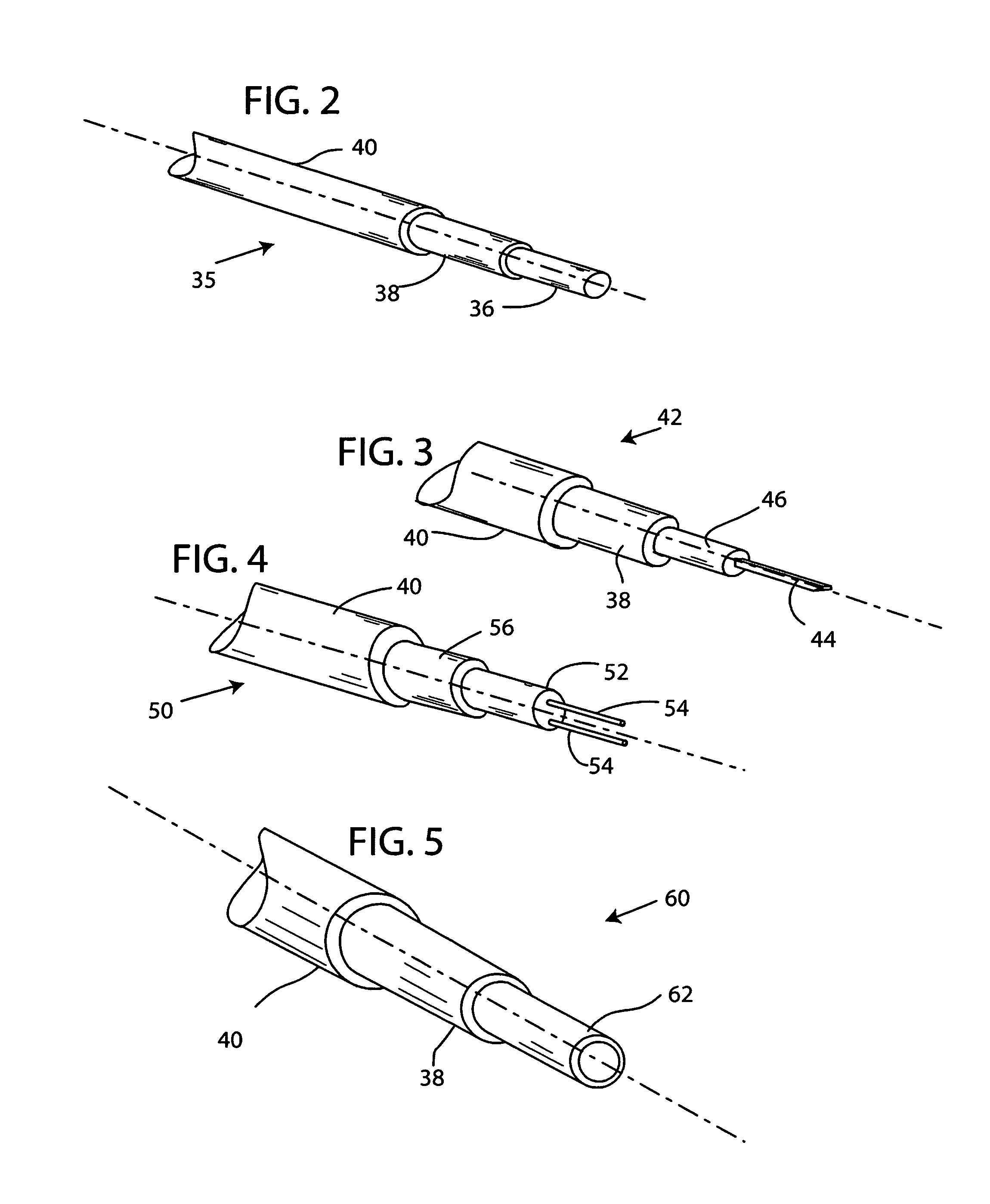Durable fine wire electrical conductor suitable for extreme environment applications
a technology of electrical conductors and fine wires, applied in the direction of insulated conductors, cables, conductors, etc., can solve the problems of failure of electrical conductors, etc., and achieve high redundancy for each connection, high flexibility, and increased flexibility of leads
- Summary
- Abstract
- Description
- Claims
- Application Information
AI Technical Summary
Benefits of technology
Problems solved by technology
Method used
Image
Examples
Embodiment Construction
[0051]The invention encompasses electrical conductors for all implantable electrostimulation and sensing devices having implanted wire leads, and non-medical applications where light weight and durability are important characteristics contributing to the performance of the electrical conductor, especially in extreme environmental conditions.
[0052]FIG. 1 shows schematically a human heart with some walls cut away. In FIG. 1 pacing leads are shown following a conventional path into the heart, and into the cardiac veins of the left ventricle, as has been typical of conventional practice and which, with some exceptions, is the basic path of leads of this invention.
[0053]In typical conventional practice, conductive leads 20, 21 and 22 are introduced into the heart through the superior vena cava 24, brought into the vena cava via subclavian or cephalic vein access points. For the right side of the heart, separate conventional pacing electrodes, as well as separate electrodes for biventricu...
PUM
 Login to View More
Login to View More Abstract
Description
Claims
Application Information
 Login to View More
Login to View More - R&D
- Intellectual Property
- Life Sciences
- Materials
- Tech Scout
- Unparalleled Data Quality
- Higher Quality Content
- 60% Fewer Hallucinations
Browse by: Latest US Patents, China's latest patents, Technical Efficacy Thesaurus, Application Domain, Technology Topic, Popular Technical Reports.
© 2025 PatSnap. All rights reserved.Legal|Privacy policy|Modern Slavery Act Transparency Statement|Sitemap|About US| Contact US: help@patsnap.com



